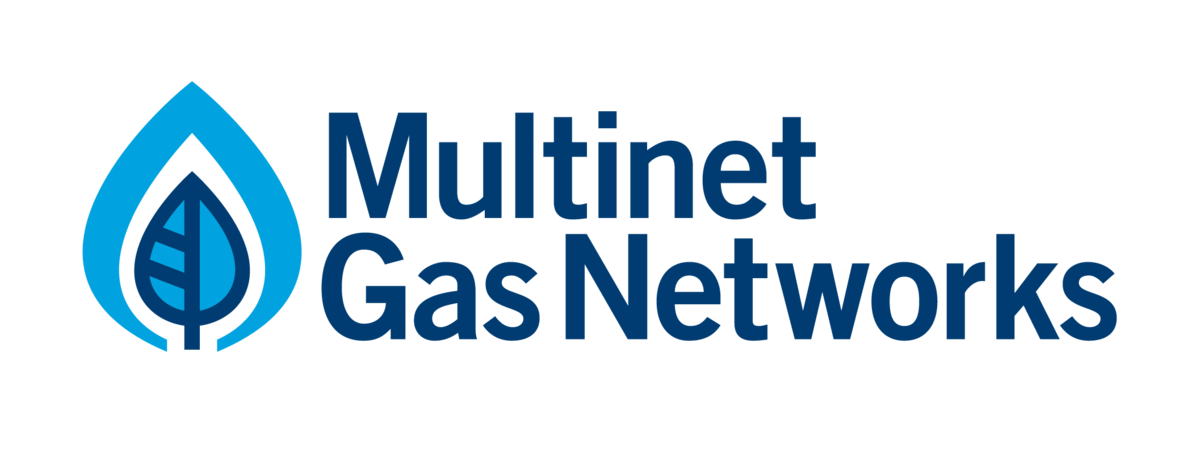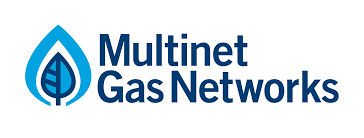Information
-
Audit Title
-
Job Description
-
Location
-
Conducted on
-
Prepared by
-
Contractor(s)
-
Work Group (name of crew leader & members0
-
Auditor(s)
-
Additional Representative(s)
Prior to Commencing Work SWP 2.1, SWP 2.5, MG MA E0.001
-
Have you checked for Life Support Customers in today’s work area, and was it safe to proceed with works?
-
Do all personnel have MG passports on site?
-
Is all training, authorisations and qualifications current for the functional role of the passport holder including contractors (e.g. traffic management)?
-
Are all relevant SWMS on site?
-
Has the JSEA/risk assessment identified site specific risks, been signed and dated by all crew members and have SWMS been identified for the task?
-
Are all identified risk control measures on SWMS and JSEA/risk assessment in place?<br>Are required high risk work permits and associated checklists in place?
-
Has the Traffic/Pedestrian Management Plan been identified/created and available on site and documented on the JSEA/risk assessment?<br>Has traffic management been implemented and have any changes been recorded on the JSEA/risk assessment?
-
Is PPE in accordance with Multinet Gas as a minimum and Service Providers expectations and within inspection/ replacement dates?
-
Does the excavation / manhole have appropriate support / effective engineering controls (i.e. battered, shields, shoring, etc)?<br>Is the excavation / manhole large enough to work in comfortably and has safe entry/exit been provided (e.g. ladder and consideration for emergency situations)?
-
For deep excavations – Has a permit been authorised by the Supervisor and notification made to WorkSafe?<br>Is the excavation being monitored during work and controls in place for unmanned work?
-
Are field employees aware of the emergency plan and is emergency equipment readily available?<br>Extinguisher located up wind and accessible to the worksite (SWP 2.5)?<br>Is the extinguisher with-in test date?
-
Have environment impacts been considered on the risk assessment, i.e. waste, water (including syphon water), soil management, sediment control, contamination, emission, flora (incl tree mgt) and fauna, heritage? Refer to MG MA E0.001, Environmental Field Manual – Guidelines<br>Has risk / contamination been effectively controlled?
-
Have all hazardous chemicals / substances (including asbestos) been managed and disposed of as per expectations and SWPs by competent and trained persons (SWP 2.11)?
-
Have sources of ignition been eliminated from work area?
Locate and Prove Assets SWP 8.1
-
Have the 5Ps been utilised effectively?<br><br>Plan – has planning been completed prior to work commencing – identify risk / controls to be implemented (including DBYD plans, no go zone rules)?
-
Prepare – have trained and competent (DBYD class/field certified) employees been utilised to identify underground assets – using approved DBYD locators?
-
Pothole/Prove – has Potholing been used to establish the exact location of the asset?
-
Protect – has the infrastructure been protected by – marking assets, identifying exclusion zones, placing barriers and communicate effectively?
-
Proceed – has work proceeded with all the above risk controls in place?
-
Have underground assets been documented on asset location sheet and Supervisor been advised of high-risk scenario (including HV checklist)?
Specific HSE Checks SWP 1.4, SWP 1.5, SWP 1.7, SWP 2.4, SWP 2.8, SWP 2.9, SWP 2.10, SWP 2.11, SWP 2.14
-
Does the task require entering and working in a confined space and, if so, are the personnel competent and compliant (SWP 1.5)? <br>(check passports and ‘prior to work checks’ have been completed)<br>o Is rescue equipment on site?<br>o Has an entry permit been used correctly?
-
Are all persons required to work in a gaseous environment trained and competent in the operation and care of respiratory protection?<br>Is the correct respiratory protection being used? <br>(check passports and ‘prior to work checks’ have been completed) <br>Has the following been considered?<br>o Are there adequate personnel on site?<br>o Have ignition sources been addressed<br>o Is there adequate ventilation to disperse contaminants?<br>o Has a standby been appointed?<br>o Is the B.A equipment and fire extinguisher manned?<br>
-
Has the worksite, all excavations and trenches been secured safely (i.e. signs, barricades, exclusion zones, fencing, plates) when unattended (including overnight)? (SWP 2.4)
-
Has a designated rest area been assigned?
-
Has the Jeavons J106 regulator been handled and disposed of appropriately as per SWP 2.14?
-
Is all electrical equipment calibrated and within test and tag dates?
Electrical Tests SWP 2.13
-
Is the gas meter location in accordance with engineering standard ES-DD-4352?
-
Has service pipe and gas meter assembly been tested to ensure it is not ‘electrically’ live using an approved voltage tester (SWP 2.13)?
-
If voltage is detected – was area restricted, consumer informed, power isolated, supervisor contacted (SWP 2.13)?<br>Note: Do not carry out any work until fault has been determined.
-
Has the meter been disconnected using cross bonding leads (SWP 2.13)?
-
Have wet rags been used where required to eliminate static?
Removal of Pipe Coatings from Steel Mains SWP 1.11
-
Has pipe area been clean, cut and scrape to expose mastic?
-
Removal of coating – asbestos containing material <br>- Has appropriate PPE been used to remove coal tar enamel?<br>- Has wastes been collected (double bagged) and made ready to transport to depot for disposal?
Safe Work Practice When Conducting Maintenance and/or Repairs on Pipelines, Mains or Services SWP 2.1
-
Had a dry chemical fire extinguisher been placed correctly?
-
Have the plans been used to identify the type and location of the gas assets?
-
In the case of a damage or escape has the gas cloud been assessed?
-
In the case of a damage or escape has the wind direction been identified?
-
In the case of a damage or escape has the need for respiratory protection been addressed?
Repair Damaged Service – Polyethylene Squeeze-off 10mm – 250mm SWP 7.16 Repair Damaged Service10mm -32mm Service SWP 4.1
-
Has the service been squash in a locations as required to isolate the damaged section?
-
Has service been check for 100% shut off at the point/escape or damage by:<br>1/ using soap and water solution or <br>2/ disconnecting the meter and opening the service control valve?
-
Have the required section of service been cut out using approved cutters for PE pipe?
-
Has the squashing device been centred over pipe?
-
Was the limiting stops set correctly?
-
(Perfection /Stab couplings)<br>Was the pipe wiped clean and the last 50mm inspected for damage?
-
(Perfection / stab couplings) <br>Was the Perfection chamfering tool used and the insertion depth marked with a felt tip pen/soft pencil?
-
(Perfection / stab couplings) <br>Has PE pipe been inserted into the coupling to a depth where the depth mark is just visible?
-
Following repairs:<br>Was the service checked for leaks using soapy water?<br>Was copper wire reconnected?<br>Was the service purged?
Hydraulic Steel Pipe Squeeze off SWP 7.17 Method for the successful squeeze-off of steel pipes ranging from 15 mm through to 50mm
-
Services up to and including 50mm?
-
Have correct squeeze off location been selected?
-
Has the pipe seam been located?
-
Have the jaws of the jacks been installed correctly to ensure the squash is on the seam, avoiding defects & joint welds
-
Was a secondary squeeze-off necessary? ?
-
Has the service been de-pressurised and cross bonding leads installed around the proposed cut?
-
Has bare steel pipe and fittings been wrapped using the five step Denso process?
-
Has backfill / reinstatement been completed as per local authority/home owner/MGN expectations?
Replacement of Copper Upstand SWP 4.8
-
Has the PE Service pipe been exposed where it joins the upstand?<br>Have squash off clamp been fitted to P.E service pipe as per SWP 4.1?
-
Has gas been depressurized through service valve and tested for 100% shut off using soapy water?
-
Have wet rags been placed over the poly service to discharge static electricity?
-
Has PE pipe been cut to allow 300mm minimum distance between squash and cut PE pipe and upstand removed?
-
Has heat fusion been completed to Connect new steel upstand to PE service pipe as per SWP 3.6?
-
Has gas been restored, service purged and test all joints for leaks?<br>Has wall bracket clip and copper tracing wire been reconnected?
-
Has reinstatement been completed as per MGN expectations, meter re-fixed and appliances relight?
Service Renewal by Insertion MG SWP 3.2
-
(If inserting) Is the pipe been inserted at the correct depth?
-
Has the carrier pipe been sealed at each break to prevent gas travelling if a leak occurs?
Electrofusion Electro Fusion MG SWP 5.8 HP Electrofusion Tapping Tees MG SWP 7.9
-
Electrofusion Preparation<br>Has electrofusion preparation been completed correctly including:<br>- Pipes cut square with approved cutters and burns removed?<br>- Electrofusion fitting placed correctly and marked?<br>- Pipe cleaned (using approved paper towel)?<br>- Pipe scraper used to remove the surface of the pipe within the fusion area?<br>- Were the line-up marks still visible after scraping?<br>- Was the prepared end protected from the environment?
-
Pipe Connection<br>Have pipes connections been checked for cleanliness, alignment and cooling times adhered to?<br>• Has pipe been laid with the manufacturer identification details on top?<br>• Has the electrofusion fitting been aligned correctly – up to line up mark?<br>• has the second pipe end been aligned correctly – up to line up mark?<br>• Have line-up clamps been secured around pipes to be joined?<br>• Has the fusion time on the fitting been checked?<br>• Has the generator output been checked for correct kVa?<br>• Has the correct type of electrofusion control box been utilized? <br>• Has operator name, date and cooling time been recorded on the pipe?
-
Has the correct process been used to complete electrofusion fusion cycle:<br>• If fittings are manual was correct fusion times selected?<br>• Correct fusion and heating time been used?<br>• fusion left undisturbed during cooling time?<br>• Joint inspected for “melt indicators”?<br>• Did the operator exit the excavation before starting the fusion process?
Manual Butt Fusion of Straight and Coiled Polyethylene pipe and Fittings 63mm in Diameter MG SWP 5.7
-
Has 25mm been remove from the ends of new lengths of pipe being fused?
-
Was the heating time for butt fusion observed?
-
Was an initial bead formed on both pipe ends before commencing the 40 second heating time?
-
Was paper towel used to clean the heating faces of the irons and the facing tool?
-
Is heating iron at 220 degrees for the fusion?
-
Are the teflon surfaces of the heating iron with-in compliant condition.
-
Was fusion cooling time period completed? (15 minutes)?
-
Was an appropriate timing device used to count the 40 second heating time?
-
Have the pipe ends been brought together with sufficient pressure to form the correct bead?
-
Did the pipe remained undisturbed in the clamp for 2 minutes until sufficiently cooled to be moved?
-
Was the fusion joint visually inspected and deemed to be satisfactory?
Saddle and Socket Fusion Saddle Fusion of PE Service Tees MG SWP 3.5 Socket Fusion of Pe Pipe and Fittings MG SWP 3.6
-
Has the correct size tee been selected to suit the main and service pipe?
-
Has the clamp and service tee been installed onto a cleaned and prepared main? (Saddle & Socket Fusion)
-
Is fusion & all electrical equipment been maintained, within calibration, within electrical test dates and in serviceable condition?
-
Is heating iron is at 220 degrees?
-
Has the 3 second test pattern been completed prior to performing saddle fusion?
-
Was heating iron placed on main with the clamp service tee held down for the correct time period? (40 seconds - using timing device)
-
Was fusion cooling time period completed before pressure testing and tapping? (15 minutes)
-
Was the pipe being socket fused held in position after fusing for 1 minute to allow cooling?
-
Were the cold ring pliers used?
-
Was the correct heating time observed (10 seconds)?
-
Was the stiffener used correctly?<br>Protruding 3mm on 16mm pipe<br>Inserted flush with the end for all other pipe
Steel pipe work corrosion Protection Protective wrapping of steel pipe MG SWP 3.6
-
Has the correct method of pipe protection been chosen?
-
Have steel service tee been wrapped as per SWP 3.7?
-
Have steel pipes been wrapped following the five step Denso process?
-
Has protective wrapping and/or paint been applied to bare metal surfaces?
Installation of an Inline Regulator Installation of a black box regulator MG SWP 3.9 Installation of an inline regulator to a multi unit MG SWP 3.12
-
If installing a below ground regulator (black Box) – has approval been received from Multinet Gas?<br>Has the unit been installed as per MG SWP 3.9?
Pressure/Leak testing General Information for Servicelaying MG SWP 1.2 Hp Servicelaying Polyethylene Pipe MG SWP 3.4
-
Is Washington pressure tester is maintained, within test dates, green fluid is within glass & inspected prior to used, connected and used correctly?
-
When laying a low pressure service to high pressure standard has it been tested to 700Kpa?
-
Were all fittings soap tested after being pressurized?
Flaring off using purging equipment When commissioning or decommissioning gas mains and services SWP 1.10
-
Were the following precautions completed<br>- Gas monitoring equipment approved and calibrated and operated by a suitably trained person?<br>- Purge stack used when the service was purged?<br>- Static electricity dispersed using bonding leads from purge stack to an earth stake?<br>- Was purging completed as per requirements and 100% gas in air achieved?
Refix and Relight of Appliances SWP 4.6 Refix a domestic meter and relight appliance.
-
Disconnecting Meter <br>- Were all appliances and control valves turned off?<br>- Was the meter, fittings and consumer piping been checked with a voltage tester?<br>- Were cross bonding strap / leads connected appropriately?<br>- Was the gas isolated - turned off at service control valve?<br>- Were personal danger tags to service valve used effectively? <br>- Was the meter disconnect as per procedure and consumer piping capped and seal?
-
Prior to re-fix <br>- Were all appliances checked to determine if they were still ‘turned off’?<br>- Was consumer piping and service pipe retested with voltage tester?<br>- Was bonding straps still attached to service riser and consumer piping?<br>- Was a check completed to determine no sources of ignition present (e.g. naked flames, electrical motors)?<br>- Was the meter reconnected to the upstand and purged?
-
Adjust or Replace Service Regulator <br>- Was flow pressure checked and adjusted as required using the appropriate equipment?<br>- Was lockup pressure checked and the regulator replaced if required?
-
Reconnect Meter to Consumer Piping<br>- With the gas supply isolated was the meter connected to customer pipe as per procedure?<br>- Was a soap test of the meter, connections and associated fittings completed? <br>- Was a leak test completed by monitoring the meter test dial to ensure no movement for five minutes?
-
Purging and Lighting of Appliances<br>- Were all appliances tested with a volt tester before re-lighting once supply was restored?<br>- Were customers notified that appliances have been lit and safe to use / or relight card left?
-
Other comment
Sign off
-
Auditor(s)
-
Auditee (Crew Leader)










